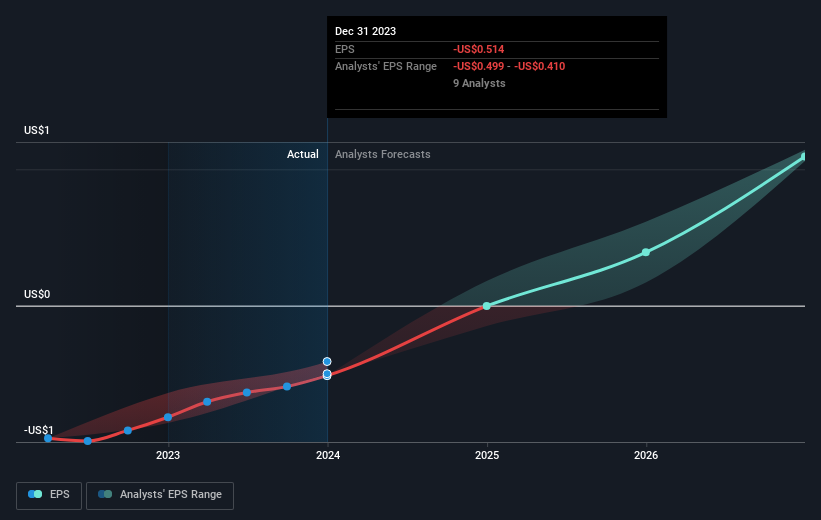Stock Analysis
- United States
- /
- Biotech
- /
- NasdaqGM:FOLD
When Will Amicus Therapeutics, Inc. (NASDAQ:FOLD) Become Profitable?

With the business potentially at an important milestone, we thought we'd take a closer look at Amicus Therapeutics, Inc.'s (NASDAQ:FOLD) future prospects. Amicus Therapeutics, Inc., a biotechnology company, focuses on discovering, developing, and delivering medicines for rare diseases. The US$3.2b market-cap company announced a latest loss of US$152m on 31 December 2023 for its most recent financial year result. Many investors are wondering about the rate at which Amicus Therapeutics will turn a profit, with the big question being “when will the company breakeven?” In this article, we will touch on the expectations for the company's growth and when analysts expect it to become profitable.
Check out our latest analysis for Amicus Therapeutics
According to the 11 industry analysts covering Amicus Therapeutics, the consensus is that breakeven is near. They anticipate the company to incur a final loss in 2024, before generating positive profits of US$121m in 2025. Therefore, the company is expected to breakeven just over a year from today. In order to meet this breakeven date, we calculated the rate at which the company must grow year-on-year. It turns out an average annual growth rate of 55% is expected, which signals high confidence from analysts. Should the business grow at a slower rate, it will become profitable at a later date than expected.

Given this is a high-level overview, we won’t go into details of Amicus Therapeutics' upcoming projects, however, bear in mind that by and large biotechs, depending on the stage of product development, have irregular periods of cash flow. This means, large upcoming growth rates are not abnormal as the company is beginning to reap the benefits of earlier investments.
One thing we would like to bring into light with Amicus Therapeutics is its debt-to-equity ratio of over 2x. Generally, the rule of thumb is debt shouldn’t exceed 40% of your equity, which in this case, the company has significantly overshot. A higher level of debt requires more stringent capital management which increases the risk around investing in the loss-making company.
Next Steps:
There are too many aspects of Amicus Therapeutics to cover in one brief article, but the key fundamentals for the company can all be found in one place – Amicus Therapeutics' company page on Simply Wall St. We've also compiled a list of key aspects you should look at:
- Valuation: What is Amicus Therapeutics worth today? Has the future growth potential already been factored into the price? The intrinsic value infographic in our free research report helps visualize whether Amicus Therapeutics is currently mispriced by the market.
- Management Team: An experienced management team on the helm increases our confidence in the business – take a look at who sits on Amicus Therapeutics’s board and the CEO’s background.
- Other High-Performing Stocks: Are there other stocks that provide better prospects with proven track records? Explore our free list of these great stocks here.
Valuation is complex, but we're helping make it simple.
Find out whether Amicus Therapeutics is potentially over or undervalued by checking out our comprehensive analysis, which includes fair value estimates, risks and warnings, dividends, insider transactions and financial health.
View the Free AnalysisHave feedback on this article? Concerned about the content? Get in touch with us directly. Alternatively, email editorial-team (at) simplywallst.com.
This article by Simply Wall St is general in nature. We provide commentary based on historical data and analyst forecasts only using an unbiased methodology and our articles are not intended to be financial advice. It does not constitute a recommendation to buy or sell any stock, and does not take account of your objectives, or your financial situation. We aim to bring you long-term focused analysis driven by fundamental data. Note that our analysis may not factor in the latest price-sensitive company announcements or qualitative material. Simply Wall St has no position in any stocks mentioned.
About NasdaqGM:FOLD
Amicus Therapeutics
Amicus Therapeutics, Inc., a biotechnology company, focuses on discovering, developing, and delivering medicines for rare diseases.
Very undervalued with exceptional growth potential.

